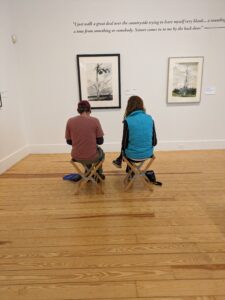
On the second day of my Rockport Immersive workshop, I took my students to the Farnsworth Art Museum to look at landscape paintings. As you might imagine, the Wyeth family are featured prominently. I want to say up front that I admire NC, Andrew, and especially Jamie Wyeth, who, in addition to having his forebears’ amazing chops, can often make me laugh out loud.
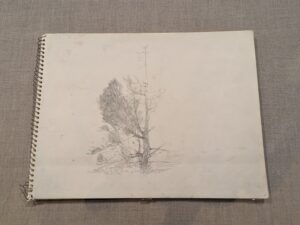
A current exhibition documents Andrew Wyeth’s relationship with siblings Alvaro and Anna Christina Olson and their ramshackle saltwater farm in Cushing, ME.
Andrew Wyeth spent time at the Olson House from 1938 until immediately after the Olson’s deaths in December, 1967 and January, 1968. Christina was the more famous Olson, as she was the subject for Wyeth’s Christina’s World. A victim of a degenerative muscular disorder, she lived most of her life as an invalid. At the age of 53, she lost her ability to stand, so she crawled everywhere. (She chose to not use a wheelchair.)
The Wyeths summered in Maine and Andrew kept a studio in the Olsons’ house, where he painted the farm, the house, and its inhabitants countless times. He said that he was looking out the window of that studio when he saw Christina crawling up the hill after visiting her parent’s gravesite. Christina, however, was not the model for the painting. At 55, she was no longer in her first flush of youth, so Wyeth used his wife Betsy as his model. It lends a bit of implausible pulchritude to an otherwise bleak painting.
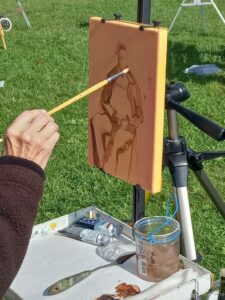
“The challenge to me,” Wyeth said, “was to do justice to her extraordinary conquest of a life which most people would consider hopeless.” Personally, I’ve always thought Christina’s World is a fine mid-century abstraction that had reality superimposed on it. If it has an emotional pull at all, I don’t feel it.
That’s not to dismiss his incredible contributions to art. I encourage my students to spend time looking at his paintings. I stress this because, as I told my flock today, “Before you can paint like Wyeth, you need to learn to draw like Wyeth.” He was meticulous in his preparation.
Yesterday, while looking at watercolors of the interior of the Olson house, one of my students said, “Andrew Wyeth got rich painting the Olsons and their house and farm. Why didn’t he do anything to make their lives easier?”
The Olsons lived in grinding rural poverty. Wyeth’s paintings show unfinished plank walls, or walls with open lath where the plaster has fallen away, or the interior of their barn, untouched by modern agricultural conveniences. They used an outhouse, an unimaginable hardship for a disabled woman.
When MoMA bought Christina’s World, Wyeth became, essentially, an overnight success. There is an unbridgeable gap between that beaten-down farm and the Wyeths’ life in Chadds Ford, PA, so my student isn’t the first person to ask the question. Several sources have written that Wyeth offered the Olson family gifts, but Christina refused any money. How much of that is mythmaking and how much is true, I can’t say. Nor can anyone else, since all the principals are dead.
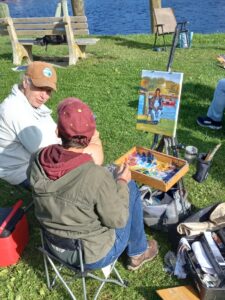
Even if it is true, there are lots of reasons needy people don’t accept help, including the fear of stigma and loss of pride. Christina Olson could think of herself as Andrew Wyeth’s equal as long as she didn’t accept his money.
There’s no getting around the fact that Wyeth profited from the struggles of a disabled person. Nor did his wealth, built in part on their backs, bring them any relief. The final insult of poverty is that it kills you young. Alvaro lived to 73, Christina to 74. In contrast, Andrew Wyeth lived to 91, Betsy to 98.
That was then, and this is now, and we’re less ethically hazy, right? Every time I see a cell-phone video of a person being assaulted or dragged screaming to an unknown fate, I recognize that there was a cameraman or woman dispassionately filming, not lifting a finger to help the victim. Apparently, cameras without consciences will always be with us.
My 2024 workshops:
- Sea & Sky at Schoodic, August 4-9, 2024.
- Find your authentic voice in plein air: Berkshires, August 12-16, 2024.
- Art and Adventure at Sea: Paint Aboard Schooner American Eagle, September 15-19, 2024.
- Immersive In-Person Workshop: Rockport, ME, October 7-11, 2024.

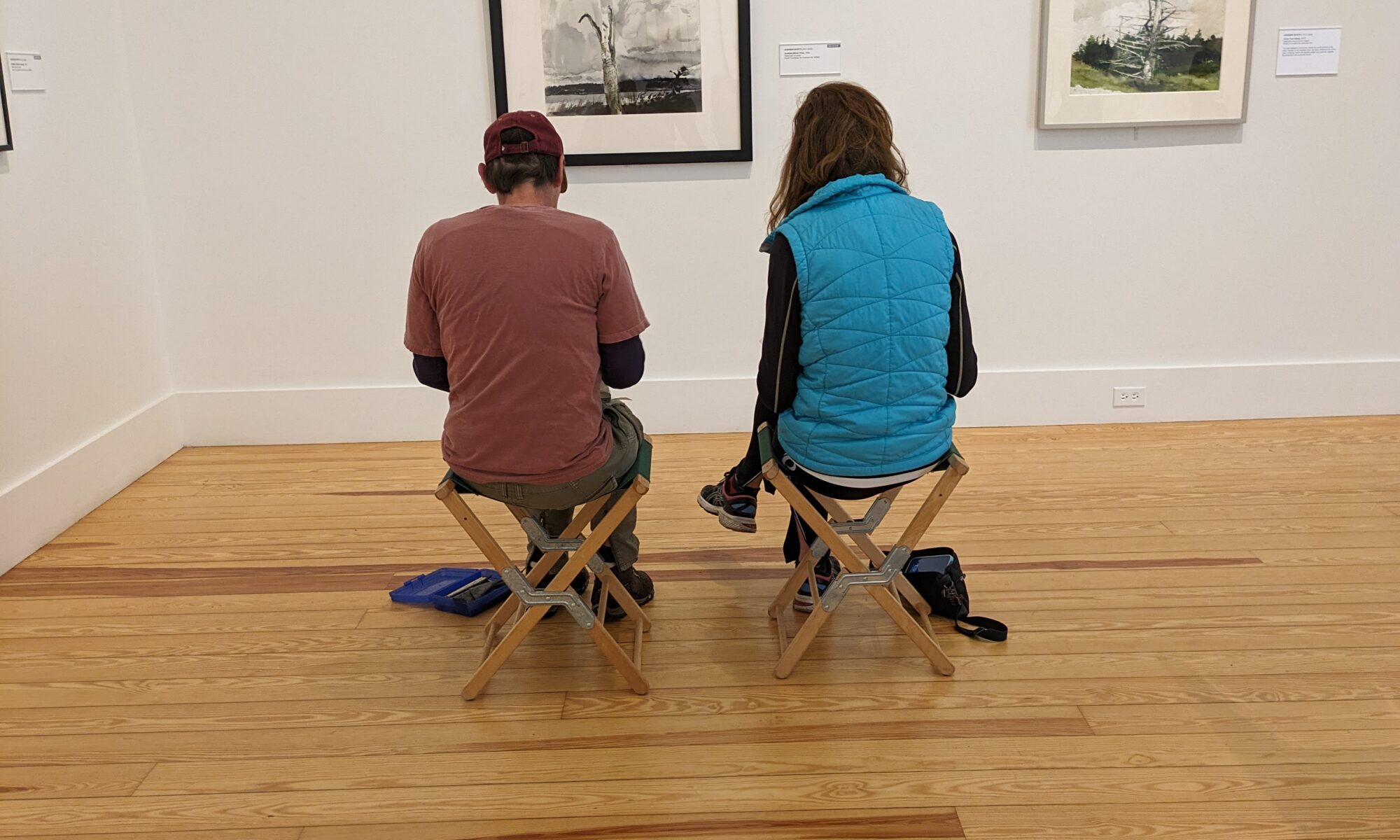
This is incredible commentary. I so enjoyed the museum today.. i have an entirely new appreciation for watercolor. You are a great writer as well as teacher.!
What a thoughtful and insightful piece. Thanks for this, Carol.
The line, “Christina Olson could think of herself as Andrew Wyeth’s equal as long as she didn’t accept his money.” is probably one of the most telling traits of many proud Mainers. Perfectly put.
Now, I’m going to correlate that statement to artists. So many of us feel it is a charity when someone buys one of our paintings. We thank them, we appreciate their patronage. But our art is so personal, that it feels like we sell pieces of ourselves. Personally, I must stop thinking people are buying my art to ‘help me out’. The constant struggle of self worth in my work. And maybe that’s because I always see where my work needs improving. As you have called it before, Imposters Guilt. At 62, I still have it.
I remember the profound experience of standing in front of the painting of the lace curtain blowing in the wind. I could smell the dust coming off the curtain as though it was the first breeze of a warmer season.
Wyeth had his faults for sure. You didn’t mention the surprise that his wife got when she learned of the Helga series.
Picasso was a crazy bastard with women, as was Gaugin. Andy Warhol and the many music and actor artists who surrounded him were something to behold. I’ve grown tired of guessing at their lives. Let the first artist who is without sin cast the first stone.
I’m sorry, but I can’t divorce morality from their work that easily. Gauguin was, by even his contemporaries’ standards, amoral. Picasso was horrible to women. It shows in both of their paintings.
I suggest you watch pbs documentary:https://www.pbs.org/wnet/americanmasters/andrew-wyeth-documentary/10443/
Maybe Andrew Wyeth admired the indomitable spirit of Christina and her family. Maybe then he was able to shake the pretenses the society in which he was born. Did he take advantage of Christina, or did he show the world that we can rise above our circumstances?
Did Picasso take advantage of a country at war when he painted Guernica?
Just imagine Wyeth’s landscape without Christina in it. It would have been a side note in his portfolio. By adding her, he speaks volumes to all people who struggle to reach beyond themselves.